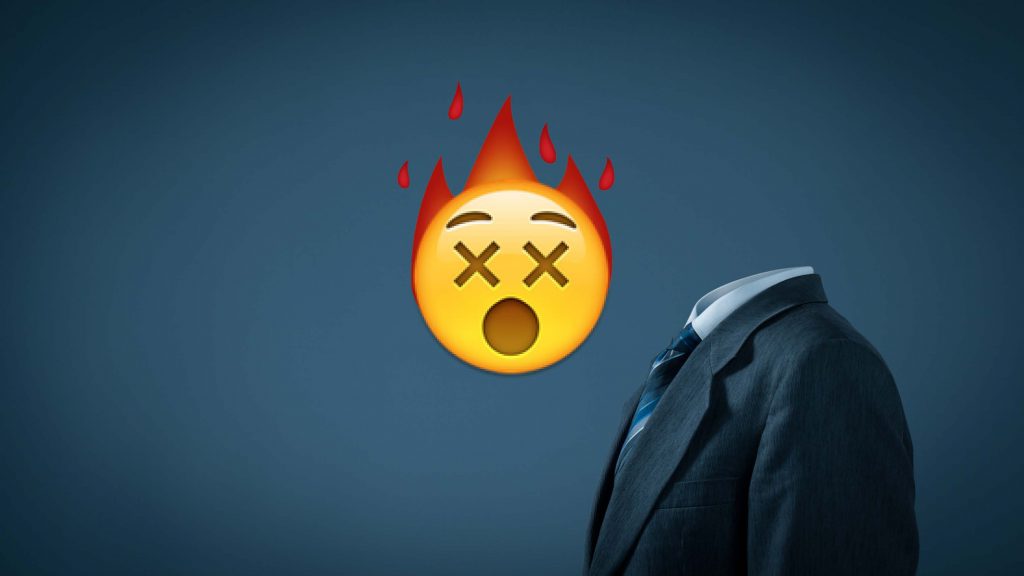The Adderall Crash & Nootropic Comeback: Summary
The TL;DR Version: Frequent and dense Adderall consumption runs the risk of nasty cognitive side effects once the Adderall effects wear off. Those side effects worsen, potentially developing into addiction, if the Adderall crash is curtailed (*postponed) by consuming more Adderall. The alternative: Nootropic and neurotoxic mitigators that reduce the Adderall crash and tolerance buildup, supporting a healthier smart drug habit.
Because I’m a snooty nerd and resentful of Bradley Cooper’s blue-eyed good looks (consider me his blue-eyed neckbeard counterpart), I prefer the literary inspiration to Limitless (titled The Dark Fields by Alan Glynn) over the movie.
Another reason for this: The book’s ending is better.
Or rather it’s “more realistic” — which, I know, don’t even say it. (I already disclaimed my snootiness.) It’s more realistic because it upholds an important Newtonian concept, Newton’s Third Law: For every action, there is an equal and opposite reaction, occasionally rendered as the more dooming What goes up must come down.
Adderall, like the Limitless pill, definitely lifts you up and, unfortunately, comes with an equal and opposite reaction: A crashing return to reality, or The Adderall Comedown.
Fortunately, there are means to lessening that blow: Nootropics.
Page Contents
What Goes Up…
Let’s get something straight: I’m not here to finger-wag or lecture or really even instruct — although I do hope that my readers (you) find this information as useful as it was/is for me. Clearly, I enjoy nootropics and aim to serve a co-authoritative role in the DIY nootropic community (as you may deduce from my calling myself the Nootropic Geek).
But I’m not the Adderall Geek.
And thus I claim no substantial authority on the subject.
This is partially because I fundamentally pivot on the differentiation between Adderallesque smart drugs, e.g., Adderall, Ritalin, Vyvanse, etc., and the Dr. Giurgean neuroprotective nootropics, e.g., citicoline, piracetam, L-theanine, etc., and mainly because I’m not a prescribed consumer of the drug: I’ve never been diagnosed with ADD/ADHD, never clinically required pharmaceutical stimulation …which are, however, what I think prepare me to speak on a distinct yet related subject:
The off-label, non-prescribed supplementation of Adderall and other stimulant smart drugs for cognitive and recreational fun.

Let’s be mature about this: Off-label Adderall usage has ramped up in recent years and doesn’t seem to be slowing down anytime soon, and this is a genuine problem, legally and otherwise. I’m not necessarily condoning the practice, but it is what it is — and it’s not good.
And to many, what it truly is is a major headache — literally. (Wah-wahh.)
Better known as:
The Adderall Comedown
Before we slay this dragon, let’s get our terminology straight:
- Adderall Comedown – The weaning and post phases of the drug experience.
- Adderall Crash – A negative comedown, marked by cognitive and physical side effects.
- Adderall Withdrawal – Cluster of symptoms provoked by abrupt cessation of long-term Adderall/stimulant use. (See sub.)
Not every Adderall experience ends in a crash.
Read my Best OTC Adderall Alternatives: 2021 Edition list here.
In many cases, the user, e.g., pops a pill in the late-morning, goes about the day; gets work done, works out, etc.; comes down, chills and/or sleeps …and that’s it. Nothing to see here. Although, I’m sure if we lift the user’s cranial hood, we’d find an amalgam of adverse brain activity that, perhaps on a sparingly single-event basis, wouldn’t incur any long-term lasting effects — however, engage those amphetaminic pathways frequently and densely (i.e., in high doses), and you’re in: The Danger Zone.

Noo, that’s not neat, dogg: Adderall and other synthesized stimulants stimulate cognition to unnatural levels, flushing the brain with unnatural concentrations of catecholamines, e.g., dopamine, norepinephrine, epinephrine, etc. — the brain chemicals involved in fight-flight cognition. Flush the brain with too much stimulation, and eventually the catecholaminergic pathways fry, turning your brain into cold soup, evidenced by the following side effects:
- Anxiety and irritability
- Panic attacks
- Depression
- Apathy
- Intense hunger*
- Insomnia
- Intense crave for more Adderall†
Not to mention the bodily adversities of high blood pressure, heart rate, GI upset, etc.
*The intense hunger side effect is a conditional byproduct of Adderall’s inhibition of appetite, the conditional aspect hinging on your piggish ability to eat against the appetite loss. Piggishness turns out to be a semi-positive behavioral trait to frequent Adderall users.
†The intense crave for more Adderall is a direct product of Adderall’s dopaminergic reward activation, and acquiescing to the temptation heightens the crash risk with each submission. If the Adderall crash is the Danger Zone, consider the Adderall crave the Danger.
Adderall Addiction/Withdrawal

The dopaminergic motivational “reward” lessens with each crave acquiescence, resulting in a progressively higher demand for Adderall, paving an inroad to addiction. This is partly effected by dopamine’s auto-oxidation into 6-hydroxydopamine (6-OHDA), a neurotoxic compound to the dopamine system that damages dopaminergic receptors via oxidative damage. The self-cannibalizing Ouroboric loop of chaos forms here: The dopamine system rewards Adderall consumption, which damages the dopamine system (via 6-OHDA), which thus requires more Adderall consumption to reach reward satisfaction, which rewards higher Adderall intake, which further damages the dopamine system, etc. Halting cold turkey amidst this process leads to a nasty withdrawal, which essentially manifests as a monstrous, migrainous Adderall crash fed for far too long. More on Addiction and Motivation.
The Nootropic Comeback
Similar to the alcohol hangover, the Adderall crash doesn’t reverse: You can lessen the pain, ease the comedown into a softer, gentler landing, yet the only 100% effective technique in avoiding (don’t say it) an Adderall crash is (DON’T SAY IT) abstinence. (Aughhh!)
This point is so annoyingly obvious and didactic that I won’t even go there.
Instead, I’ll simply go over the nootropic methods to alleviating the Adderall crash, mechanisms that I’ve simplified into two categories:
i. Nootropic Mediation
Instant release (IR) Adderall stimulates cognition for an average 6 hours, while the drug lingers in the body for much longer. In other words, the subjective comedown begins earlier than the actual amphetamine comedown, preventing your unconscious mechanisms from relaxing. This underlies the wrenching experience of feeling t’wired, or tired and wired, when all you want is to sleep. Some nootropics may help with this, easing the mind and body from catecholaminergic stimulation to GABAergic relaxation, whilst also salvaging catecholamine levels for post-Adderall normal cognition.
ii. Neurotoxic Mitigation
These aren’t nootropics per se, at least not in the cognitive enhancing sense, but rather antioxidant neuroprotectors against Adderall’s neurotoxicity. These substances reduce Adderall neurotoxicity through various pathways: 6-OHDA attenuation, NMDA receptor inhibition, toxin clearance, and more. Timing is important as some nootropic enthusiasts claim these substances may weaken the Adderall experience. However, if utilized correctly, these neurotoxic mitigators may reduce tolerance buildup to the drug, maintaining Adderall’s potency while reducing the risk of addiction.
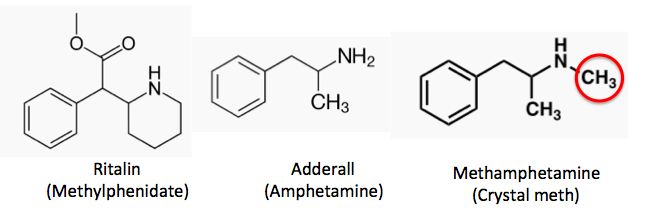
Due to the lack of research on this subject (nootropics + Adderall), there is no standard list on what/what not to stack with Adderall to optimize the experience. Neither do I have a quote-unquote standard list for myself — however, based on personal experience, other users’ anecdotal reports, and preclinical research, I’ve compiled a couple lists of Nootropic Mediators and Neurotoxic Mitigators, respectively. If you feel I’ve missed any, feel free to comment your what‘s and why‘s in the comment section below.
Until then, enjoy:
Nootropic Mediators
L-Theanine
Pre-, intra-, or post-amphetamine usage — there really isn’t a “bad” time to supplement L-theanine in temporal relation to the Adderall experience. In the world of nootropics, L-theanine earns its positive reputation for “taking the edge off” of caffeine and other similar stimulants: L-theanine removes the jitters yet sustains the focus, awareness, etc.
L-theanine explains the relaxed wakefulness effects of green tea.
During the Adderall experience, L-theanine may mildly even out the stimulation to a more calm, focused state, although not as effectively as during the caffeine experience, obviously. During the comedown, L-theanine’s GABAergic support may help curb anxiety symptoms while easing the mind to sleep. More on L-Theanine.
Ashwagandha

Fun Fact: I’m sipping on ashwagandha-laden green tea atm.
Corollary Fact: Ashwagandha green tea goes great with vegan cookies and artisanal beets — #Fun.
Hipsters love ashwagandha because it’s so chill. Which is essentially why I like ashwagandha as well, except I ascribe ashwagandha’s “chill” to its adaptogenic activation of GABA receptors and potential antioxidant neuroprotection. Tyrosine may salvage mood and focus during high stress conditions and rhodiola may alleviate feelings of fatigue, but ashwagandha’s relaxation borders on sedation. And this turns out to be a good thing on the tail-end of an Adderall stint.
Ashwagandha rarely makes the “Adderall Comeback” lists, but I find its anxiolytic relaxation immensely helpful in the cool-down period. Also, I’m super hip and thus obliged to include non-conformist list items. More on Ashwagandha.
Valerian Root
This is a hit-or-miss suggestion (for me: hit) as some users experience stimulation, not the expected sedation, with Valerian Root supplementation. My reasoning for including it on this list (other than that it works for me):
- Valerian potentially enhances GABAergic activation.
- Valerian potentially protects dopaminergic cells.
Needless to say, the potential combination of GABAergic relaxation and dopaminergic neuroprotection perfectly fits the bill for a post-Adderall comeback. However, before trying valerian to attenuate the Adderall crash, I recommend supplementing it independently, i.e. on a completely sober mind, for a few trial-runs to determine whether it stimulates or sedates your unique little brain. More on Valerian.
Melatonin
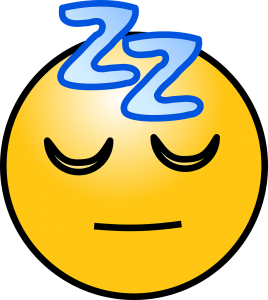
Naturally synthesized melatonin plays an important neurochemical role in sleep and circadian rhythms, whereas dietary melatonin acutely sedates the mind, shifting it to a “sleep” state, often to treat insomniac events. For the Adderall-harried brain, melatonin serves two functions:
- Enhanced sleep control.
- Reduced dopaminergic neurotoxicity.
The first benefit is obvious.
The second benefit bridges neatly into the next list of substances (Neurotoxic Mitigators): As this rat study shows, melatonin possesses significant antioxidant activity, inhibiting 6-hydroxydopamine (6-OHDA), a toxic dopaminergic byproduct, thereby mitigating Adderall neurotoxicity. Two birds, one stone.
Neurotoxic Mitigators
Memantine
Memantine first made an appearance on this website on my Nootropics for ADD and ADHD article. As an N-methyl-D-aspartate (NMDA) receptor inhibitor, memantine has demonstrated significant neuroprotective effects in rat models of “amphetamine derivatives-induced neurotoxic damage” (the “amphetamine derivatives” being MDMA and methamphetamines). Despite the side effect risk inherent in memantine supplementation, the drug is believed to reverse (or at least lessen) tolerance build-up to Adderall and other stimulants — although, more human trials are required for further clarification on this point.
Magnesium
Given that magnesium seems to behave as an NMDA receptor inhibitor (and that Mg deficiency is one of the more common mineral deficiencies), it’s a smart idea to supplement Mg while taking stimulants. Personally, I’ve found the mineral incredibly effective at allowing my brain and body to relax in the evening after a day on Adderall or modafinil.
Ever experienced muscle twitches after a long night of boozing? That’s partly due to the alcohol-related loss of magnesium, which directly counteracts acetylcholine’s activation of muscle at the neuromuscular junction. A similar sort of spastic muscle contractions may occur while on stimulants and low on magnesium. Supplementing magnesium may significantly help mitigate any unwelcome cerebral and muscular excitation in the evening.
Vitamin C

Emergen-C and grapefruits are a godsend for the Adderall-raddled brain. Ditto for the LSD-raddled brain, alcohol-raddled brain, and essentially any other drug-type-raddled brain. I say this for Vitamin C, a blood-brain permeable antioxidant that accomplishes two neuroprotective functions:
- The reduction of free radicals
- The acidification of urine
Acidic urine protects the brain? Yes, numb nutz — it does while on Adderall. This bio-effect expedites the clearance the Adderall from the system, potentially ameliorating Adderall neurotoxicity. Additionally, vitamin C may assist the synthesis of dopamine to normal levels.
Vitamin D
This suggestion is predicated on the Wang JY et al study “Vitamin D(3) attenuates 6-hydroxydopamine-induced neurotoxicity in rats” in which the researchers concluded:
[O]ur data indicate that D3 pretreatment attenuates the hypokinesia and DA neuronal toxicity induced by 6-OHDA. Since both H(2)O(2) and 6-OHDA may injure cells via free radical and reactive oxygen species, the neuroprotection seen here may operate via a reversal of such a toxic mechanism.”
Hypokinesia, partial or complete lack of muscle movement due to a disruption in basal ganglia, is ascribed to 6-OHDA, the neurotoxic byproduct of amphetamine usage. However, take into consideration that the study evaluates D3’s effects on a rat model without the actual use of amphetamines.
N-Acetyl-Cysteine
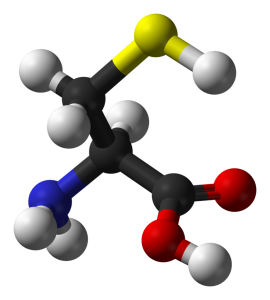
The name NAC typically surfaces in alcohol hangover discussions, however the same idea applies to the Adderall crash: N-Acetyl-Cysteine is a precursor to amino acid L-Cysteine — is a precursor to antioxidant glutathione — and thus may enhance the body’s natural antioxidant defense against toxins, particularly in the liver.
Bodybuilders use cysteine to protect the liver against steroids and acetominophen.
Drinkers use cysteine to eliminate toxic ethanol levels from the body.
Likewise for the Adderall users, although this comes with a caveat: NAC is a vasodilator and can increase blood flow, influencing blood pressure. Due to this, concurrently supplementing NAC and Adderall requires caution. As a safety measure, some users wait until after the Adderall effects wear off, sometimes until next morning, before taking NAC.
Best Nootropic Supplements for the Adderall Crash
If you’re riding the Adderall train, odds are you have more-than-sufficient mental gusto to whip up a mean Adderall recovery stack. However, not everyone has the time (nor willingness) to organize a successful “nootropic comeback” regimen, instead opting for any of the effective premade supplement selections available online and in-store. I have a few Best Nootropic Supplements for the Adderall Crash options worth checking out, if you’re lacking the time and willingness to DIY concoct your own perfect stack. Here they be:
Mind Lab Pro
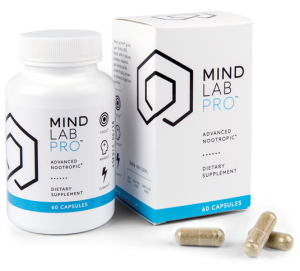 Mind Lab Pro supplies L-Theanine as Suntheanine®, a premium, patented form of L-theanine that may significantly help calm the mind while sustaining the brain-boosting effects of stimulants — as part of an all-natural, stim-free formula design. Mind Lab Pro’s use of L-tyrosine, in particular, may also help alleviate the “need” (or craving) for Adderall in the first place.
Mind Lab Pro supplies L-Theanine as Suntheanine®, a premium, patented form of L-theanine that may significantly help calm the mind while sustaining the brain-boosting effects of stimulants — as part of an all-natural, stim-free formula design. Mind Lab Pro’s use of L-tyrosine, in particular, may also help alleviate the “need” (or craving) for Adderall in the first place.
By focusing on the underlying structures of brain function — as opposed to ramping up brain activity via synthetic stimulation — Mind Lab Pro advances mental performance in a way that also enhances brain health. For the Adderall-addled mind, this means applying additional supplementary support on the brain pathways involved in cognitive enhancement. It accomplishes both neuroprotection and neuroregeneration.
On that note, if you’re looking to cut Adderall altogether, Mind Lab Pro’s all-natural, all-nootropic formula may help elevate your cognition to a more sustainable, long-term standard. No comedown or crash or lockjaw.
Want some? Get the best deal on Mind Lab Pro here.
Read my in-depth review on Mind Lab Pro.
Performance Lab Mind
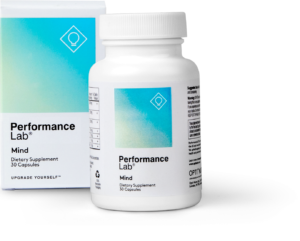 If Mind Lab Pro’s on this list, Performance Lab Mind almost has to follow, considering it supplies four of Mind Lab Pro’s best ingredients: Citicoline (as Cognizin®), Phosphatidylserine (as Sharp-PS® Green), L-Tyrosine, and Maritime Pine Bark Extract. It’s an awesome, simple nootropic stack that, instead of trying to do everything, only focuses on the key pressure points involved in elevated cognition. And it does this by:
If Mind Lab Pro’s on this list, Performance Lab Mind almost has to follow, considering it supplies four of Mind Lab Pro’s best ingredients: Citicoline (as Cognizin®), Phosphatidylserine (as Sharp-PS® Green), L-Tyrosine, and Maritime Pine Bark Extract. It’s an awesome, simple nootropic stack that, instead of trying to do everything, only focuses on the key pressure points involved in elevated cognition. And it does this by:
- Improving brain energy metabolism
- Enhancing neuroregeneration
- Boosting the brain’s antioxidant status
- Supplying additional neurochemical support
It’s an impressively high powered stack, given its small size. However, in addition to many of the nootropics listed above, Performance Lab Mind may not only help alleviate the stimulant comedown but fortify its neuroprotective resistance to adverse Adderall effects. It’s a brain health stack through-and-through, worth consideration whether you’re an Adderall user or not.
Want some? Get the best deal on Performance Lab Mind here.
Read my in-depth review on Performance Lab Mind.
Sleep It Off: Performance Lab Sleep
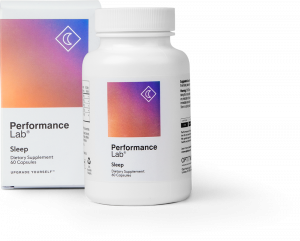 Due to the unstable variability of synthetic melatonin, a common ingredient in sleep aid supplements, I’m particularly leery of OTC melatonin. Sometimes it works, other times not — and occasionally I’m left with a foggy headache in the morning, which is not at all how I prefer to wake up following an Adderall bout. Performance Lab Sleep does what many sleep aids don’t: P-Lab Sleep supplies stable, natural melatonin naturally sourced from tart cherries (in addition to the aforementioned magnesium). The result: reliable, predictable sleep enhancement with no next-morning grog. For me, this was a major revelation: finally, a sleep aid that doesn’t eff me up in the morning! For the Adderall user, Performance Lab Sleep provides a healthy comeback option, helping ease the stim-addled mind to a calm, clean, relaxed, sleepy state.
Due to the unstable variability of synthetic melatonin, a common ingredient in sleep aid supplements, I’m particularly leery of OTC melatonin. Sometimes it works, other times not — and occasionally I’m left with a foggy headache in the morning, which is not at all how I prefer to wake up following an Adderall bout. Performance Lab Sleep does what many sleep aids don’t: P-Lab Sleep supplies stable, natural melatonin naturally sourced from tart cherries (in addition to the aforementioned magnesium). The result: reliable, predictable sleep enhancement with no next-morning grog. For me, this was a major revelation: finally, a sleep aid that doesn’t eff me up in the morning! For the Adderall user, Performance Lab Sleep provides a healthy comeback option, helping ease the stim-addled mind to a calm, clean, relaxed, sleepy state.
Conclusion
To continue the Newtonian principle of actions and reactions, Adderall is an intense action. Countering with nootropics and other “natural” substances obviously doesn’t match Adderall with equal force. Which is why we need to also lend consideration to a more Darwinian viewpoint: Survive, damn you! Stay fit and survive!
Sterilizing the Adderall side effects with nootropic substances is one thing.
Fostering a healthy mind and body to reduce crash risk altogether is another.
Don’t forget about exercise, diet, sleep, etc. These help in most aspects of life — of course they help in dealing with Adderall as well. In many ADHD cases, they’re the first things modified upon diagnosis. (See, now I am finger-wagging.) If the crashes become that bad, take a look at your lifestyle routines and be sure to check with a bona fide Adderall Geek, i.e., your physician. Or consider a lower grade stimulant… maybe something that rhymes with shmoshafinil, or something like that.
For more on the subject of positive life routines, check out my Best Pre-Made Nootropic Supplements list. And be sure to comment any thoughts, questions, personal anecdotes, haikus, snafus, etc. down below!

